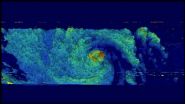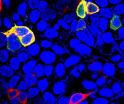(Press-News.org) Despite great advances in understanding how the human brain works, psychiatric conditions, neurodegenerative disorders, and brain injuries are on the rise. Progress in the development of new diagnostic and treatment approaches appears to have stalled. In a special issue of the Cell Press journal Neuron, experts look at the challenges associated with "translational neuroscience," or efforts to bring advances in the lab to the patients who need them.
"A variety of global impact studies have identified brain disorders as a leading contributor to disabilities and morbidity worldwide with a critical economic, public health, and societal impact," notes Neuron Editor Dr. Katja Brose. "There is resounding agreement that we need new approaches and strategies, and there are active efforts, discussion, and experimentation aimed at making the process of therapeutic development more efficient and effective."
One paper in the issue notes that there are limited venues for stakeholders to come together in a coordinated way to address the challenges ahead. An Institute of Medicine sponsored workshop brought together leaders from industry, academia, government, and nonprofit agencies to discuss the challenges associated with creating effective treatments for brain disorders. Steve Hyman, of the Broad Institute of MIT and Harvard, and colleagues present the results of this workshop and review the challenges associated with the translational process and propose opportunities and solutions for increased collaborations to accelerate the development of needed treatments. "To ensure continued advances in brain science, partnerships between government, industry, and academic scientists are needed," says Dr. Hyman.
Another paper points to recent decisions by several large pharmaceutical companies to downsize their neuroscience research divisions, reflecting a growing view that developing drugs to treat brain diseases is more difficult and often more time consuming and expensive than developing drugs for other therapeutic areas. Changing the policies that regulate market returns for the most needed, breakthrough drugs may be necessary, according to Dr. Dennis Choi, of SUNY Stony Brook, and his co-authors. "The broader neuroscience community and patient stakeholders should advocate for the crafting and implementation of these policy changes," says Dr. Choi. "Scientific and patient group activism has been successful in keeping the development of therapies in other areas—such as HIV and cancer—appropriately on track, but this type of sector-wide activism would be a novel step for the neuroscience community."
While the challenges related to brain research are great, significant progress continues to be made. For example, one paper in the special issue examines the impressive amount of research to date regarding various protein markers—including amyloid and tau—that indicate the presence of neurodegeneration and an increased risk of developing Alzheimer's disease. "This paper highlights the remarkable advances in our ability to detect evidence of Alzheimer's disease in the brain, prior to clinical symptoms of the disease, and to predict those at greatest risk for cognitive decline," says lead author Dr. Reisa Sperling, of Brigham and Women's Hospital, Massachusetts General Hospital, and Harvard Medical School. "These new findings have implications for ongoing and future clinical trials aimed at preventing memory loss associated with Alzheimer's disease." She notes that research suggests that while amyloid accumulation is necessary but not sufficient to cause cognitive decline along the trajectory of Alzheimer's disease, emerging data suggest that amyloid may accelerate spreading of tau pathology, synaptic dysfunction, nerve cell loss, and other disruptions that can lead to cognitive impairment.
If allowed to continue with robust funding and collaboration, research on Alzheimer's disease and other neurological conditions may eventually lead to ways to prevent memory loss, learning disabilities, and a host of other devastating symptoms caused by alterations in the brain.
INFORMATION:
Neuron, Brose: Bridging the Gap
Neuron, Choi et al.: "Medicines for the Mind: Policy-Based ''Pull'' Incentives for Creating Breakthrough CNS Drugs"
Neuron, Pankevich et al. "Improving and Accelerating Drug Development for Nervous System Disorders"
Neuron, Sperling et al. "The Evolution of Preclinical Alzheimer's Disease: Implications for Prevention Trials"
DENVER – A risk stratification model based on lymph node characteristics confirms with a high level of confidence the true lack of lung cancer in lymph nodes adequately sampled with endobronchial ultrasound-guided transbronchial needle aspiration and classified as negative.
Lung cancer treatment and prognosis is critically dependent on accurate staging that takes into account the extent to which cancer has spread from the primary lung tumor to other locations. Examination of lymph nodes containing lung cancer cells that have spread can be done by surgical removal, ...
Stanford University School of Medicine scientists have found a new way to forecast which patients with age-related macular degeneration are likely to suffer from the most debilitating form of the disease.
The new method predicts, on a personalized basis, which patients' AMD would, if untreated, probably make them blind, and roughly when this would occur. Simply by crunching imaging data that is already commonly collected in eye doctors' offices, ophthalmologists could make smarter decisions about when to schedule an individual patient's next office visit in order to optimize ...
Hurricane Vance was a hurricane on Nov. 4 when the Tropical Rainfall Measuring Mission or TRMM satellite and the Global Precipitation Measurement (GPM) mission satellite passed overhead and measured its rainfall from space. TRMM and GPM revealed areas of heavy rain within the storm before it weakened to a depression and made landfall on Nov. 5.
The TRMM satellite flew over hurricane Vance on Nov. 4 at 0953 UTC (4:53 a.m. EST). Rainfall derived from TRMM's Microwave Imager (TMI) data collected were overlaid on a 1000 UTC (5 a.m. EST) image from NOAA's GOES-West satellite ...
Typhoon Nuri continued moving in a northeasterly direction passing the island of Iwo To, Japan when NASA's Aqua satellite passed overhead.
The Moderate Resolution Imaging Spectroradiometer or MODIS instrument that flies aboard NASA's Aqua satellite captured a visible picture of Typhoon Nuri on Nov. 5 at 4:10 UTC (11:10 p.m. EST, Nov. 4).
At 1002 UTC (5:02 a.m. EST) a microwave image captured from NASA/JAXA's Tropical Rainfall Measuring Mission or TRMM satellite showed that the low-level center of circulation was beginning to weaken. The strongest thunderstorms had become ...
DENVER – Pretreatment interstitial lung disease (ILD) is a significant risk factor for developing symptomatic and severe radiation pneumonitis in stage I non-small cell lung cancer (NSCLC) patients treated with stereotactic body radiation therapy (SBRT) alone.
ILD is a group of diseases that cause scarring and stiffing of the tissue and space around the air sacs in the lungs, which results in diminished gas exchange. The incidence of ILD among lung cancer patients is higher than in the general population as tobacco smoking is a common risk factor for both. Some ...
CLEVELAND—Artificial platelet mimics developed by a research team from Case Western Reserve University and University of California, Santa Barbara, are able to halt bleeding in mouse models 65 percent faster than nature can on its own.
For the first time, the researchers have been able to integratively mimic the shape, size, flexibility and surface chemistry of real blood platelets on albumin-based particle platforms. The researchers believe these four design factors together are important in inducing clots to form faster selectively at vascular injury sites while ...
Alexandria, Va. — Earth's abundant silicate minerals are degraded over time by exposure to water, chemical dissolution, and physical and chemical weathering by tree roots and even insects such as ants and termites. Such weathering plays a significant role in decreasing carbon dioxide in the atmosphere, as carbon dioxide is consumed in chemical weathering reactions and the resultant carbonate becomes sequestered in the form of limestone and dolomite.
To study the effects of weathering over time, researchers buried basalt sand at multiple test sites and dug up the ...
BUFFALO, N.Y. – Empathy is among humanity's defining characteristics. Understanding another person's plight can inspire gentle emotions and encourage nurturing behaviors.
Yet under certain circumstances, feelings of warmth, tenderness and sympathy can in fact predict aggressive behaviors, according to a recent study by two University at Buffalo researchers.
But why?
That an expression of kindness might be manifest as a punch in the nose can leave observers scratching their heads.
The answer is that it's not about anger or feeling personally threatened, says ...
"New Rochelle, NY, November 5, 2014—The e-incubator, an innovative miniature incubator that is compatible with magnetic resonance imaging (MRI), enables scientists to grow tissue-engineered constructs under controlled conditions and to study their growth and development in real-time without risk of contamination or damage. Offering the potential to test engineered tissues before human transplantation, increase the success rate of implantation, and accelerate the translation of tissue engineering methods from the lab to the clinic, the novel e-incubator is described ...
INDIANAPOLIS -- Indiana University School of Medicine researchers have identified a small protein with a big role in lowering plasma glucose and increasing insulin sensitivity. Their research appeared online today in Diabetes, the journal of the American Diabetes Association.
The report indicates that Sestrin 3 plays a critical role in regulating molecular pathways that control the production of glucose and insulin sensitivity in the liver, making it a logical target for drug development for type 2 diabetes and metabolic syndrome, which can produce increased blood pressure, ...





